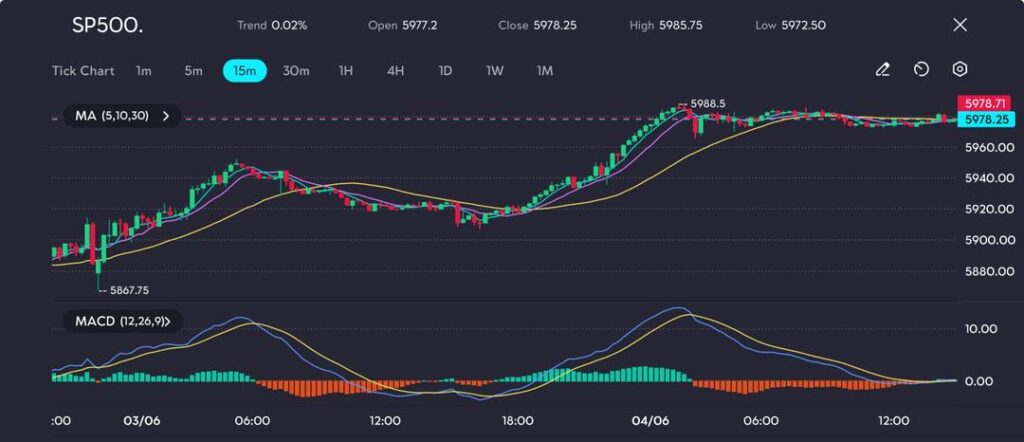
Market confidence is rising as Wall Street turns more optimistic, fuelled by easing trade concerns, solid earnings, and cooling inflation. With the S&P 500 holding near record levels, investors appear focused on potential gains while staying alert to key economic signals.
The S&P 500 held its ground on Wednesday, consolidating just below its recent peak of 5,988.5, as investor sentiment remained upbeat amid a string of forecast upgrades from major Wall Street firms.
Barclays became the latest to raise its year-end projection for the index, citing a reduction in trade tensions and expectations of earnings stabilisation by 2026.
The bank increased its target to 6,050 from the previous 5,900, aligning with recent upgrades from Goldman Sachs, UBS, Deutsche Bank, and RBC Capital.
These adjustments reflect the impact of stronger-than-anticipated Q1 earnings and growing optimism that tariff-related pressures will ease heading into 2025.
Barclays strategists, led by Venu Krishna, maintained their 2025 earnings per share (EPS) forecast at $262 and introduced a 2026 EPS estimate of $285, with a 6,700 index target—representing a potential 12% upside from current levels.
They expect tariff-related disruptions to be absorbed by the end of FY2025, allowing a return to pre-disruption growth trends.
While some inflationary and margin risks persist, Barclays sees minimal direct tariff impact by next year.
May’s robust performance added momentum to this bullish narrative, with the S&P 500 climbing 6.2%—its strongest monthly gain since November 2023.
Markets were buoyed by a softer stance on tariffs from former President Trump, strong corporate earnings (particularly from AI-driven and cyclical sectors), and cooling inflation figures that renewed hopes for Federal Reserve rate cuts.
The S&P 500 appears to be entering a short-term consolidation phase after reaching a local high of 5,988.5.
Following a sharp rebound from the 3 June low of 5,867.75, price action has remained firm, supported by strong bullish momentum during the latter half of the session.

The short-term moving averages (5, 10, and 30) currently support a bullish bias, with the shorter EMAs positioned above the longer MA.
However, these are beginning to flatten, indicating a potential loss of upward momentum. The MACD histogram is narrowing, and the MACD lines are converging—both pointing to a possible pause in buying activity.
While the broader trend remains upward, the index is trading within a narrow range near 5,978, suggesting indecision near resistance.
A breakout above 5,988.5 could clear the way for further upside, while a dip below 5,960 may trigger short-term corrective pressure.
Despite the bullish backdrop, traders should remain cautious as the index hovers near record highs.
Markets remain sensitive to macroeconomic data, particularly wage inflation and consumer spending figures, which could inject short-term volatility.
Any upside surprises in upcoming CPI or PCE data could dampen expectations for near-term Fed rate cuts.
Nevertheless, as long as the 5,940 support level holds, the overall trend remains intact.
Barclays’ upgraded target of 6,050 is now a key level to watch for summer positioning, with technical and fundamental factors aligned in favour of continued strength—albeit with potential speed bumps along the way.
Click here to open account and start trading.